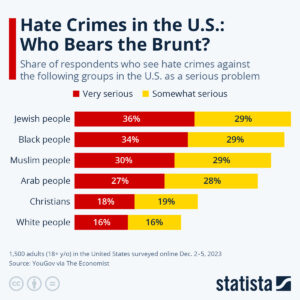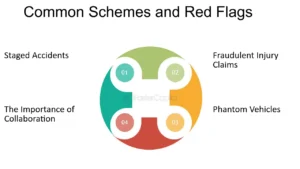Abstract:
The crime index serves as a vital tool for understanding the prevalence and distribution of criminal activities within societies. This essay provides an in-depth exploration of the crime index, examining its measurement methodologies, implications for public safety and policy-making, and challenges in interpretation. Drawing on insights from criminology, sociology, and public policy, the essay delves into the complexities of measuring crime, including the role of reporting biases, victimization surveys, and law enforcement data. Furthermore, it discusses the socio-economic factors influencing crime rates, the impact of crime on communities and individuals, and the role of policy interventions in addressing underlying drivers of criminal behavior. By shedding light on the intricacies of the crime index, this essay aims to deepen understanding and inform strategies for crime prevention, law enforcement, and social policy.

I. Introduction:
The crime index serves as a fundamental metric for understanding the prevalence, patterns, and trends of criminal activities within societies. It provides valuable insights into the safety and security of communities, informing policymakers, law enforcement agencies, and the general public about the nature and extent of crime. This essay aims to provide a comprehensive analysis of the crime index, exploring its measurement methodologies, implications for public safety and policy-making, and challenges in interpretation. By delving into the complexities of crime measurement and its implications, this essay seeks to deepen understanding and inform strategies for addressing crime and promoting community well-being.
II. Measurement of Crime:
The measurement of crime involves various methodologies and data sources, each offering unique perspectives on the nature and extent of criminal activities. Some of the key measurement approaches include:
A. Uniform Crime Reporting (UCR): The UCR program, administered by the Federal Bureau of Investigation (FBI) in the United States, collects data on reported crimes from law enforcement agencies across the country. The UCR collects information on various types of crimes, including violent crimes (e.g., homicide, robbery, assault) and property crimes (e.g., burglary, theft, motor vehicle theft). However, the UCR has limitations, including underreporting of certain crimes, inconsistencies in reporting practices across jurisdictions, and reliance on law enforcement data.

B. National Crime Victimization Survey (NCVS): The NCVS, conducted by the Bureau of Justice Statistics (BJS) in the United States, gathers data on crime victimization through household surveys. The NCVS collects information on crimes that are not reported to law enforcement, providing a more comprehensive picture of crime prevalence and victimization rates. However, the NCVS also has limitations, including underreporting, sampling biases, and respondent recall errors.
C. Self-Report Studies: Self-report studies involve surveys or interviews with individuals about their involvement in criminal activities. These studies provide insights into the prevalence and nature of criminal behavior, including offenses that may not be captured by official crime statistics. However, self-report studies are subject to biases, social desirability effects, and limitations in respondent reliability and validity.
D. International Crime Indices: International crime indices, such as the Global Peace Index (GPI) and the United Nations Office on Drugs and Crime (UNODC) Crime Index, provide comparative assessments of crime rates and levels of peace and security across countries. These indices use various indicators, including homicide rates, incarceration rates, and perceptions of safety and security, to rank countries based on their levels of crime and violence. However, international crime indices may be influenced by differences in data collection methods, legal definitions of crime, and socio-cultural factors across countries.
III. Implications of Crime Index:
The crime index has significant implications for public safety, policy-making, and social well-being. Some of the key implications include:
A. Public Safety and Perceptions of Crime: The crime index influences public perceptions of safety and security, shaping attitudes toward law enforcement, crime prevention, and community engagement. High crime rates can erode public trust in institutions, foster fear and anxiety among residents, and undermine social cohesion. Conversely, efforts to reduce crime and improve public safety can enhance community well-being and quality of life.

B. Socio-economic Factors and Crime Rates: The crime index reflects underlying socio-economic factors that contribute to crime rates, including poverty, inequality, unemployment, and social disorganization. Communities facing socio-economic challenges are more likely to experience higher levels of crime and violence, as individuals may resort to criminal activities as a means of survival or social mobility. Addressing underlying socio-economic disparities is essential for reducing crime and promoting community resilience.
C. Impact on Communities and Individuals: Crime has profound impacts on communities and individuals, affecting physical and psychological well-being, economic stability, and social cohesion. Victims of crime may suffer from trauma, loss, and financial hardship, while communities may experience social stigma, disinvestment, and population loss. Moreover, crime can perpetuate cycles of violence, poverty, and intergenerational disadvantage, undermining efforts to build safer and more prosperous communities.
D. Policy Responses to Crime: The crime index informs policy responses to crime, guiding resource allocation, intervention strategies, and law enforcement priorities. Effective crime prevention requires a multi-faceted approach that addresses root causes, such as poverty, inequality, and social exclusion, while also targeting high-risk individuals and environments through targeted interventions, community policing, and restorative justice initiatives. Moreover, policies aimed at reducing crime must be evidence-based, culturally sensitive, and responsive to the needs and priorities of affected communities.

IV. Challenges in Interpretation:
Interpreting crime index data poses several challenges, including reporting biases, variability in data collection methods, comparability across jurisdictions, and complexities in crime measurement. Some of the key challenges include:
A. Reporting Biases and Underreporting: Crime index data may be subject to reporting biases, as not all crimes are reported to law enforcement or captured by victimization surveys. Factors such as fear of retaliation, mistrust of authorities, and cultural norms may influence individuals’ willingness to report crimes, leading to underestimates of crime prevalence and victimization rates.
B. Variability in Data Collection Methods: Crime index data may vary in reliability and validity due to differences in data collection methods, sampling techniques, and measurement instruments. Variability in data collection practices across jurisdictions can affect the comparability and consistency of crime statistics, making it challenging to assess trends and patterns over time.
C. Comparability Across Jurisdictions: Comparing crime rates across jurisdictions can be challenging due to differences in legal definitions of crime, law enforcement practices, and socio-cultural factors. Moreover, variations in population size, demographic composition, and socio-economic conditions can influence crime rates and levels of reported crime, further complicating cross-jurisdictional comparisons.
D. Addressing Complexities in Crime Measurement: Crime measurement involves complexities related to the classification of offenses, the accuracy of data sources, and the interpretation of crime trends. Certain types of crime, such as cybercrime, white-collar crime, and organized crime, may be underreported or difficult to measure using traditional methods, posing challenges for accurately assessing their prevalence and impact.
V. Case Studies: Notable Trends in Crime Indices:

Several notable trends in crime indices highlight the complexities and challenges of measuring crime and addressing its underlying drivers. Some of the key trends include:
A. Urbanization and Crime: Urban areas often experience higher levels of crime and violence compared to rural areas, due to factors such as population density, social inequality, and limited access to economic opportunities. Rapid urbanization and population growth can exacerbate social tensions, strain public resources, and increase the risk of crime and disorder.
B. Technological Advances and Cybercrime: Technological advancements have facilitated the emergence of new forms of crime, including cybercrime, identity theft, and online fraud. The proliferation of digital technologies, internet connectivity, and online platforms has created new opportunities for criminal exploitation and victimization, posing challenges for law enforcement agencies and policymakers.
C. Globalization and Transnational Crime: Globalization has facilitated the expansion of transnational criminal networks engaged in illicit activities such as drug trafficking, human trafficking, and money laundering. Transnational crime poses challenges for law enforcement cooperation, jurisdictional boundaries, and regulatory enforcement, requiring international collaboration and coordination to address effectively.
VI. Future Directions in Crime Measurement and Policy:
Future directions in crime measurement and policy include:
A. Enhancing Data Collection and Analysis: Improving data collection methods, enhancing data quality, and leveraging new technologies for crime measurement can enhance the accuracy and reliability of crime index data. Investing in data infrastructure, training, and capacity-building can strengthen the capacity of law enforcement agencies and statistical agencies to collect, analyze, and disseminate crime statistics.

B. Addressing Socio-economic Drivers of Crime: Addressing underlying socio-economic factors, such as poverty, inequality, unemployment, and social disorganization, is essential for reducing crime and promoting community well-being. Policies aimed at addressing socio-economic disparities, expanding access to education, healthcare, and economic opportunities, and strengthening social safety nets can help prevent crime and build more resilient communities.
C. Strengthening Community Engagement and Policing: Strengthening community engagement, trust-building, and collaboration between law enforcement agencies and local communities can enhance crime prevention efforts and promote public safety. Community policing initiatives, restorative justice programs, and community-based interventions can empower communities to address the root causes of crime and violence and build safer, more inclusive neighborhoods.
D. Investing in Evidence-based Interventions: Investing in evidence-based crime prevention interventions, such as early intervention programs, youth mentoring initiatives, and community development projects, can reduce crime and victimization rates and improve community well-being. By targeting high-risk individuals and environments and addressing underlying risk factors, evidence-based interventions can disrupt the cycle of crime and promote positive outcomes for individuals and communities.
VII. Conclusion:
The crime index serves as a critical tool for understanding the prevalence, patterns, and trends of criminal activities within societies, informing policy-making, law enforcement strategies, and community responses to crime. However, interpreting crime index data poses challenges due to reporting biases, variability in data collection methods, and complexities in crime measurement. Addressing these challenges requires a multi-faceted approach that combines improved data collection methods, evidence-based interventions, and community engagement strategies. By deepening understanding of the complexities of crime measurement and its implications, this essay aims to inform efforts to address crime and promote community well-being.



